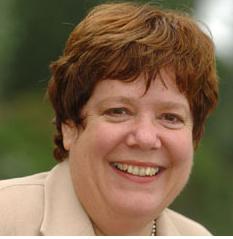Despite recent statistics showing HIV/AIDS on the rise in Canada, AIDS service organizations say the government has made it more difficult to access federal funds.
The Public Health Agency of Canada (PHAC) released its guidelines for funding proposals for Canadian HIV/AIDS groups on Dec 2, giving groups just 28 days to make their cases for more federal funding.
Funding criteria has also changed, and funding is now open to groups that had not received past monies. Applicants must now also include more information from partners, and the funding envelope is for two years instead of the usual four.
A PHAC spokesperson says the time frame was chosen to ensure new funding agreements are in place early in the next fiscal year.
“An open solicitation will allow applicants to apply for funding to develop new, innovative projects that align with the PHAC’s public health objectives and benefit the health of all Canadians,” the spokesperson says. “Letters of partnership identify the commitment and role other partners will take in assisting the project to achieve its intended outcomes. These letters are also evidence that there is regional need and support for the project.”
Hazelle Palmer, executive director of the AIDS Committee of Toronto (ACT), says ACT doesn’t have much time to pull together proposals given the changed criteria. She says chasing down partner letters at a time when people have already left for the holidays adds to the difficulty.
“It creates a barrier for AIDS service organizations that actually really desperately need these funds,” she says.
The open call is also a problem when overall funding isn’t growing.
“It’s the same amount of funds for the past few years, and yet the need in AIDS service organizations is growing, so when you open a call, it might be prudent as well to expand that pot of dollars so we’re not competing,” Palmer says.
Opposition critics are also crying foul at the timeline and the changes.
“[PHAC] gave them 28 days over Christmas, when most of the PHAC people are going to be not sitting around in their offices for five of those days, which gives people 23 days when this should have been done way back in August,” says Liberal health critic Hedy Fry. “It’s not reasonable or fair to ask non-profit societies to do this kind of work in 28 days.”
Fry says asking for letters from the medical officer of health and other partners makes it more difficult for smaller organizations, especially in rural and remote areas of the country.
“They’re not going to be able to meet the criteria for the process – not even the quality of the work but the process of getting the funding application in,” Fry says. “One has to ask . . . is it politically that they don’t want to say they’re cutting the existing funding but they’re making it so hard for people to get it?”
NDP health critic Libby Davies says it’s disrespectful.
“I hate to be cynical, but I feel like there is a pattern where for funding, they like to create this sense of uncertainty, and it creates almost a dependency, where people don’t dare speak out,” Davies says of the government.
Fry says the open call is especially problematic for smaller organizations.
“They’ve increased the amount per individual funding grant from $80,000 to $85,000, but they’ve got the total amount the same, so that means that fewer grants are going to go to fewer organizations,” Fry says. “So everything is set up not to allow for the small organizations to succeed.”


 Why you can trust Xtra
Why you can trust Xtra


